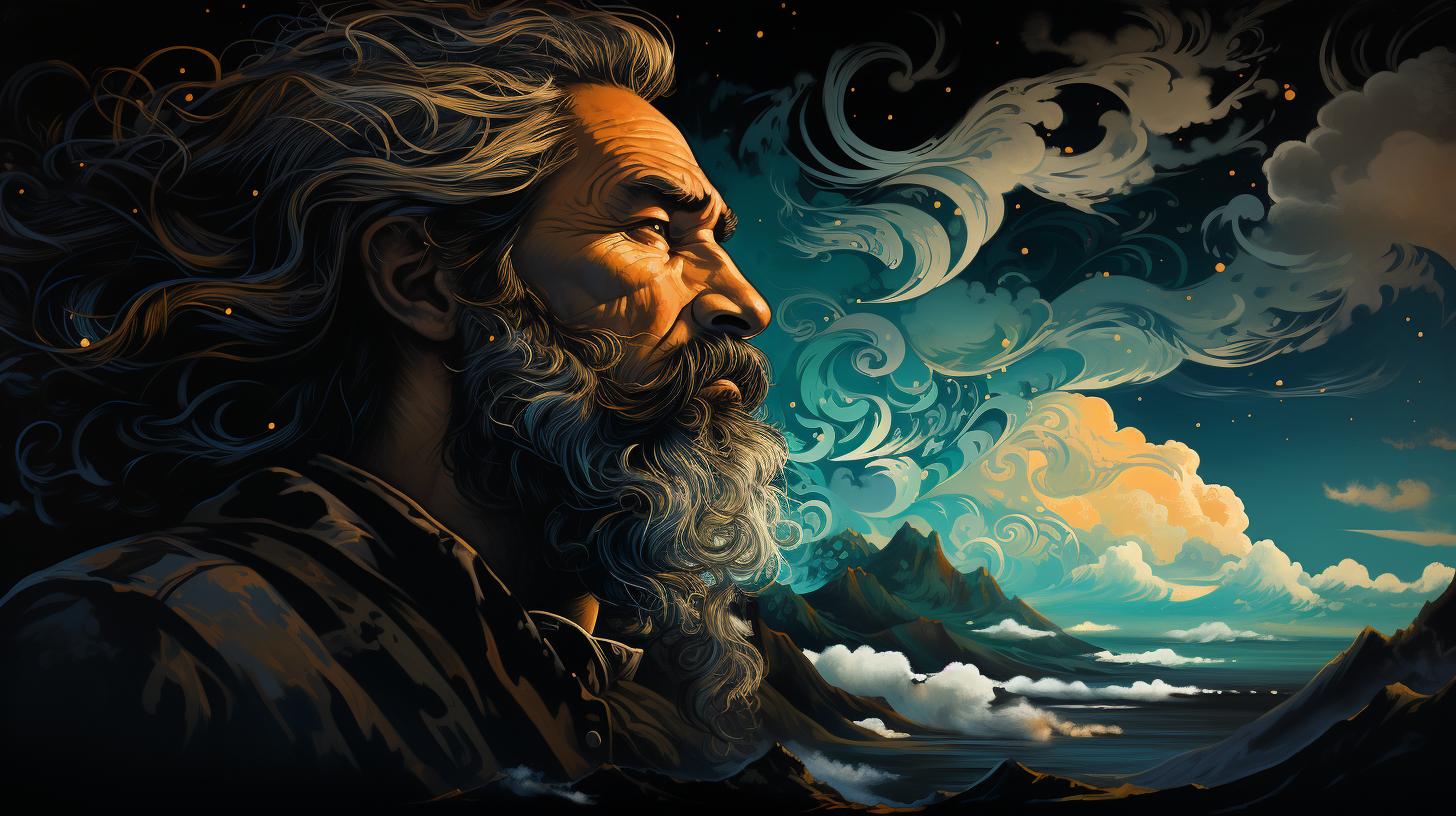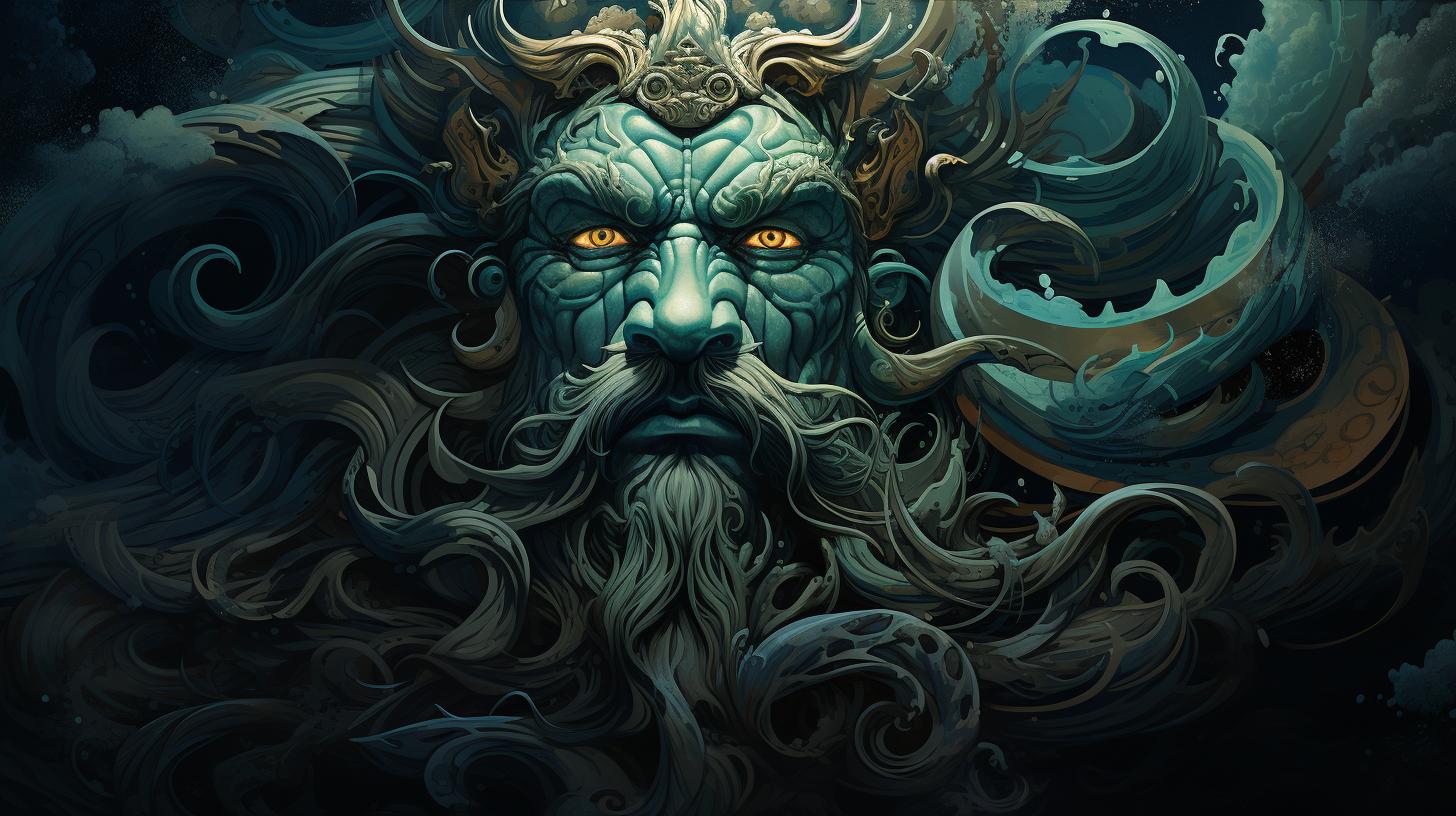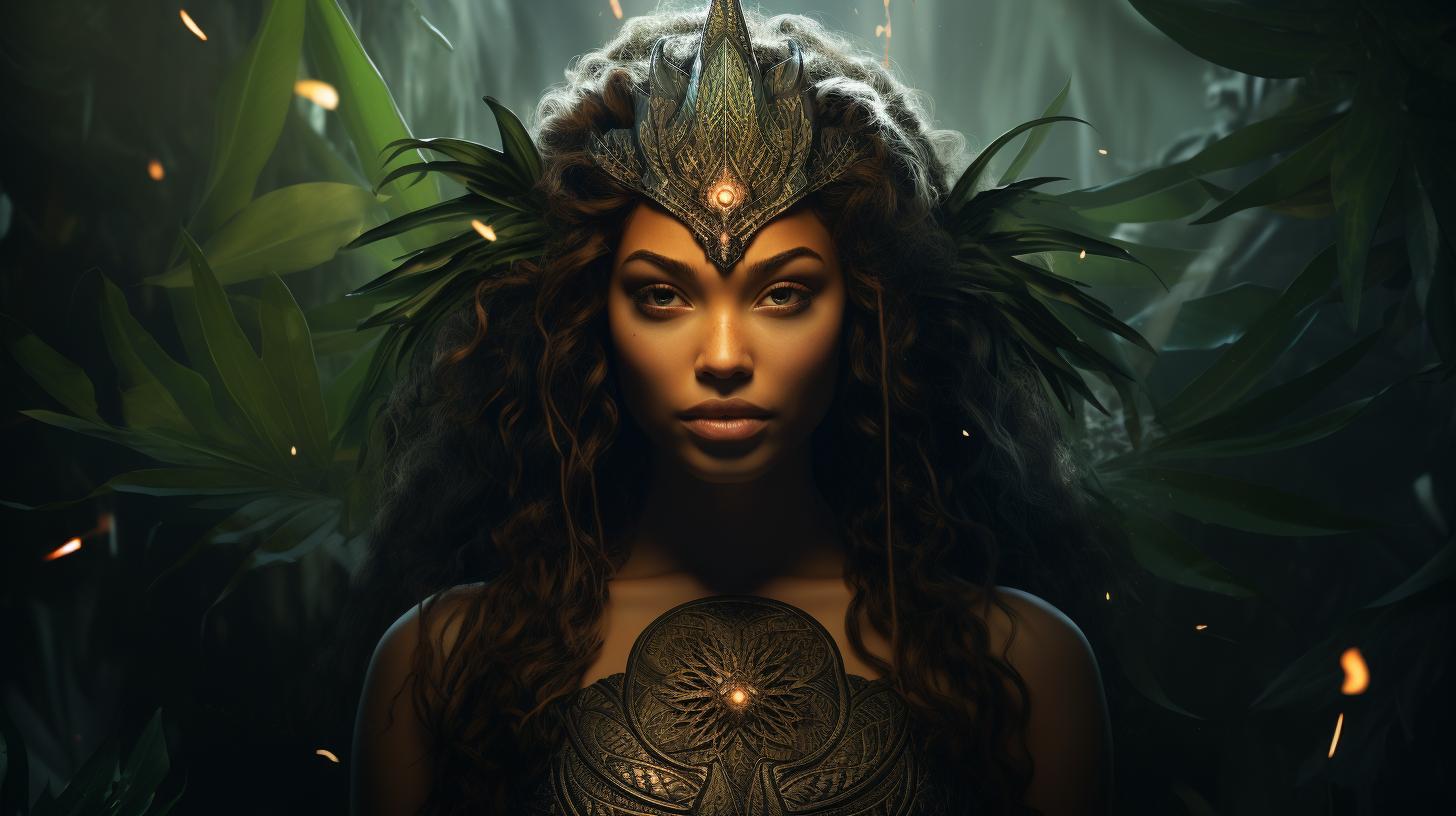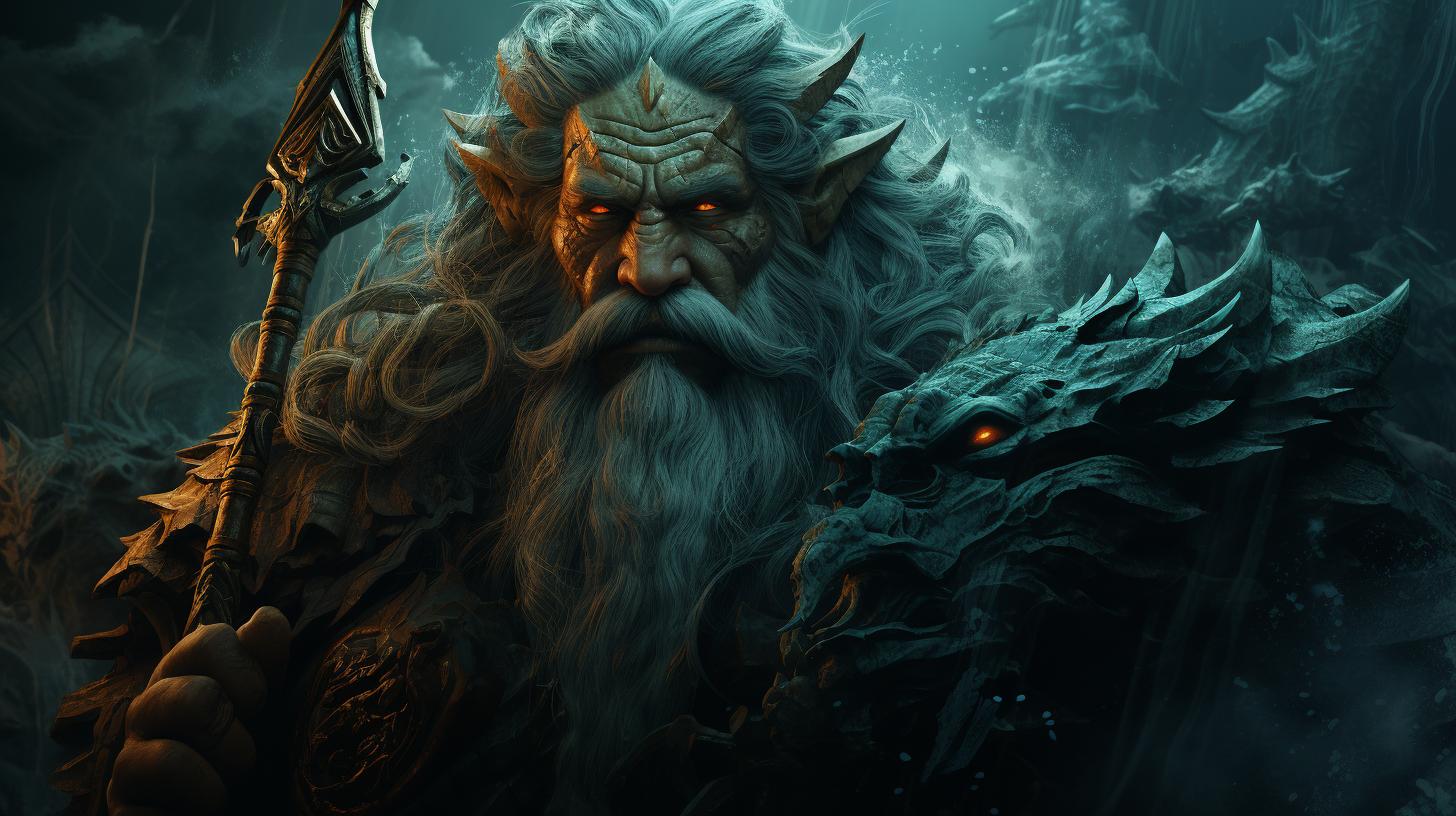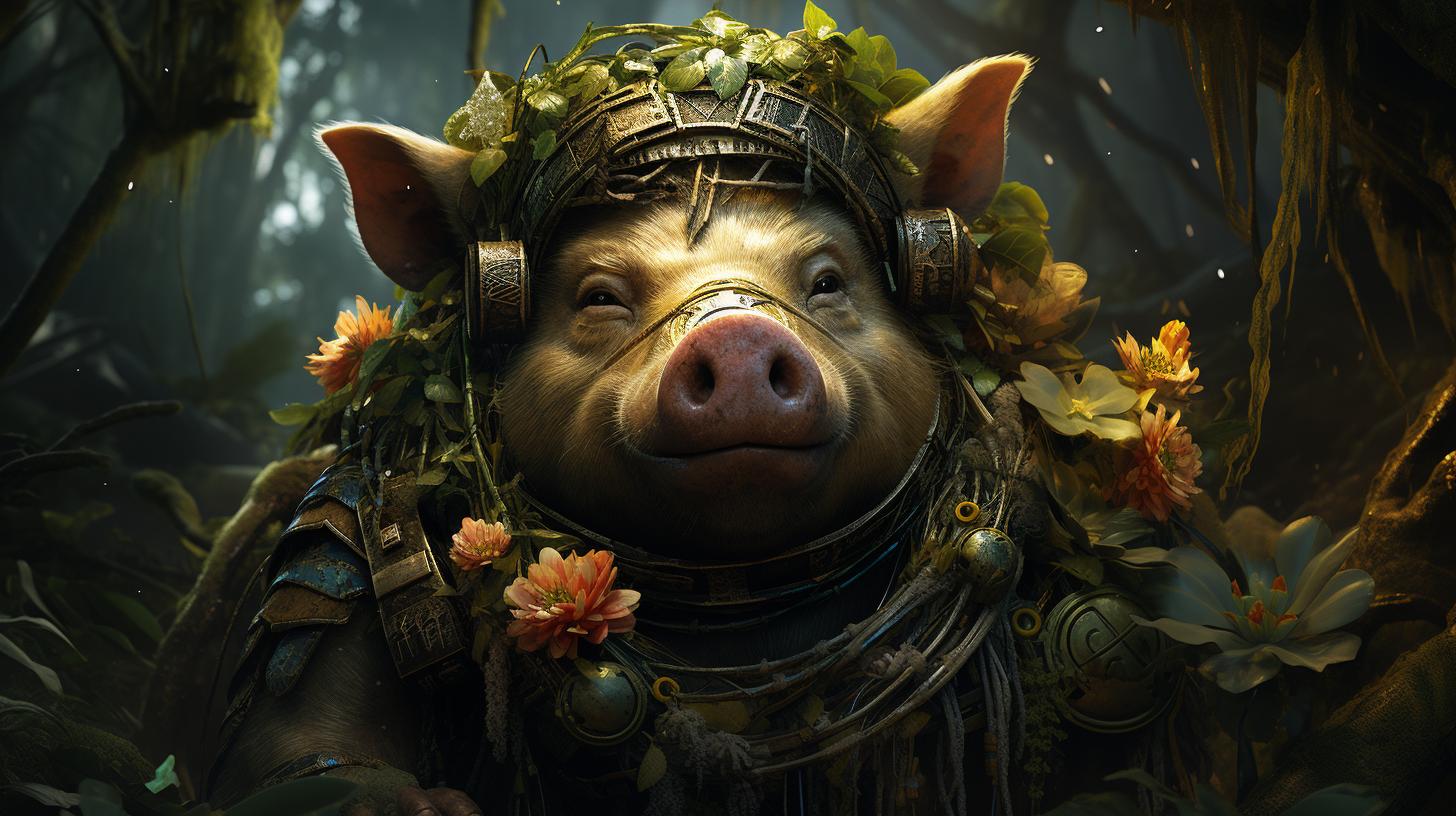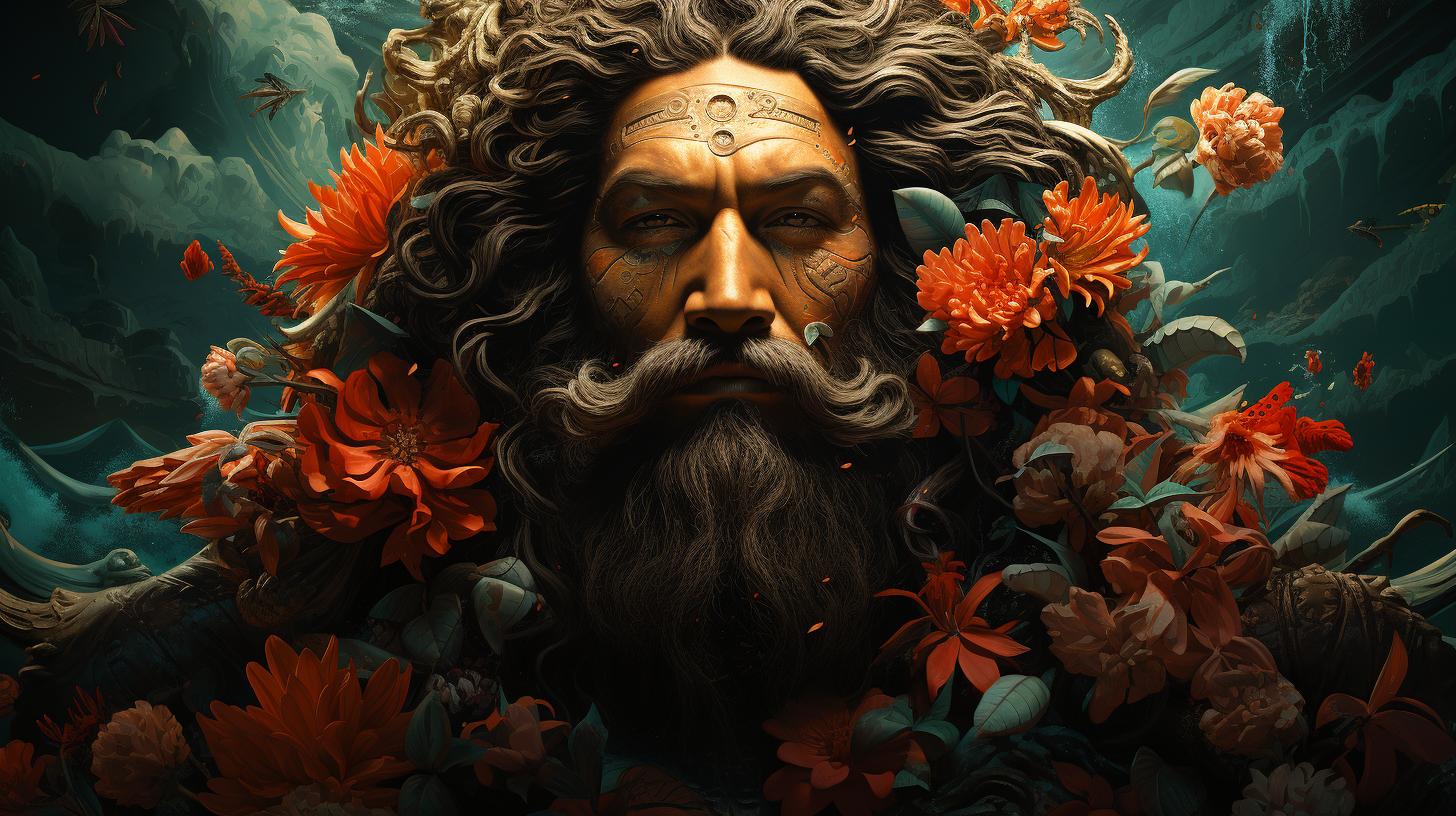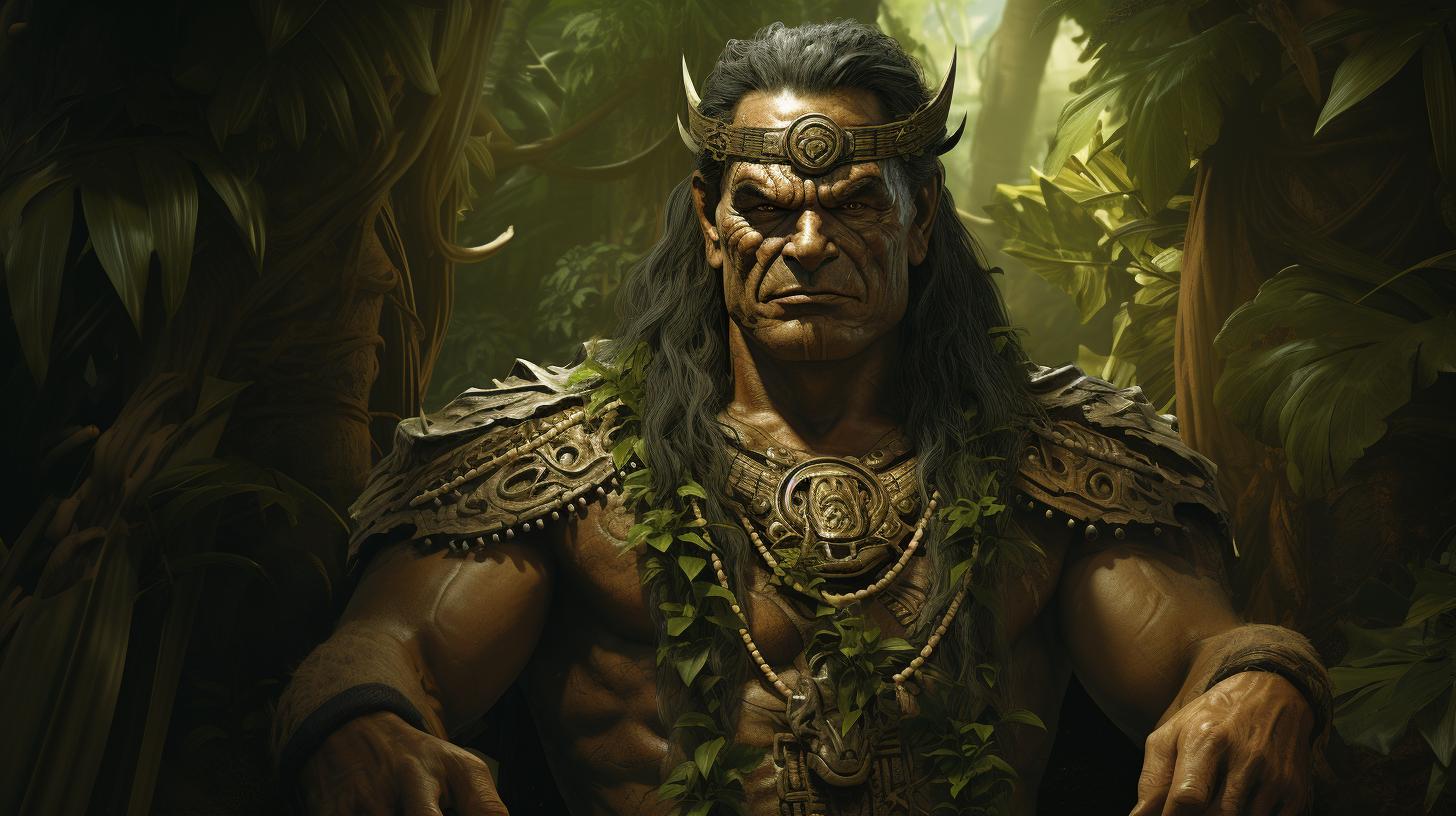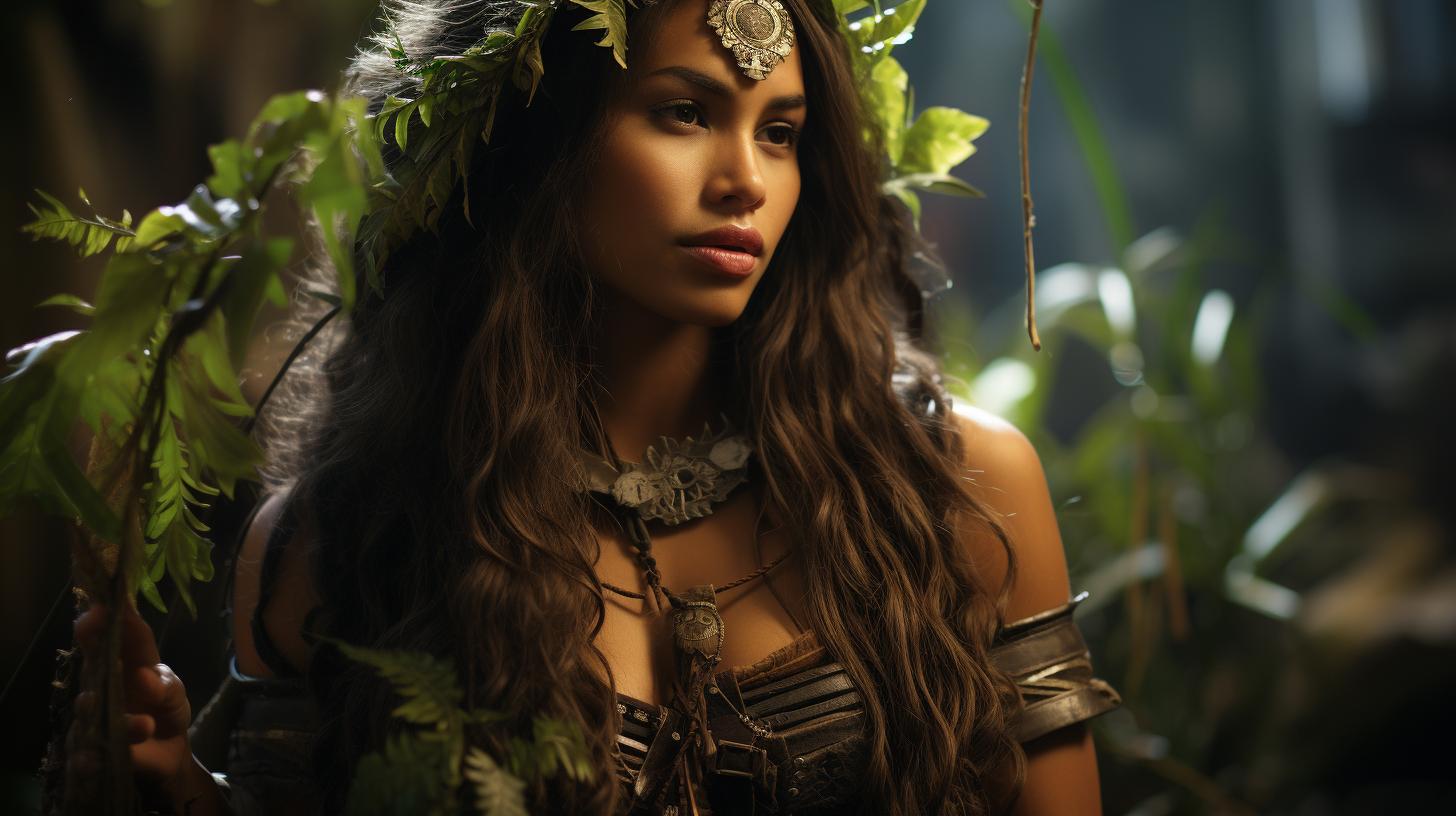Honoring Ku Hawaiian God: Exploring the Deity and Significance in Hawaiian Culture
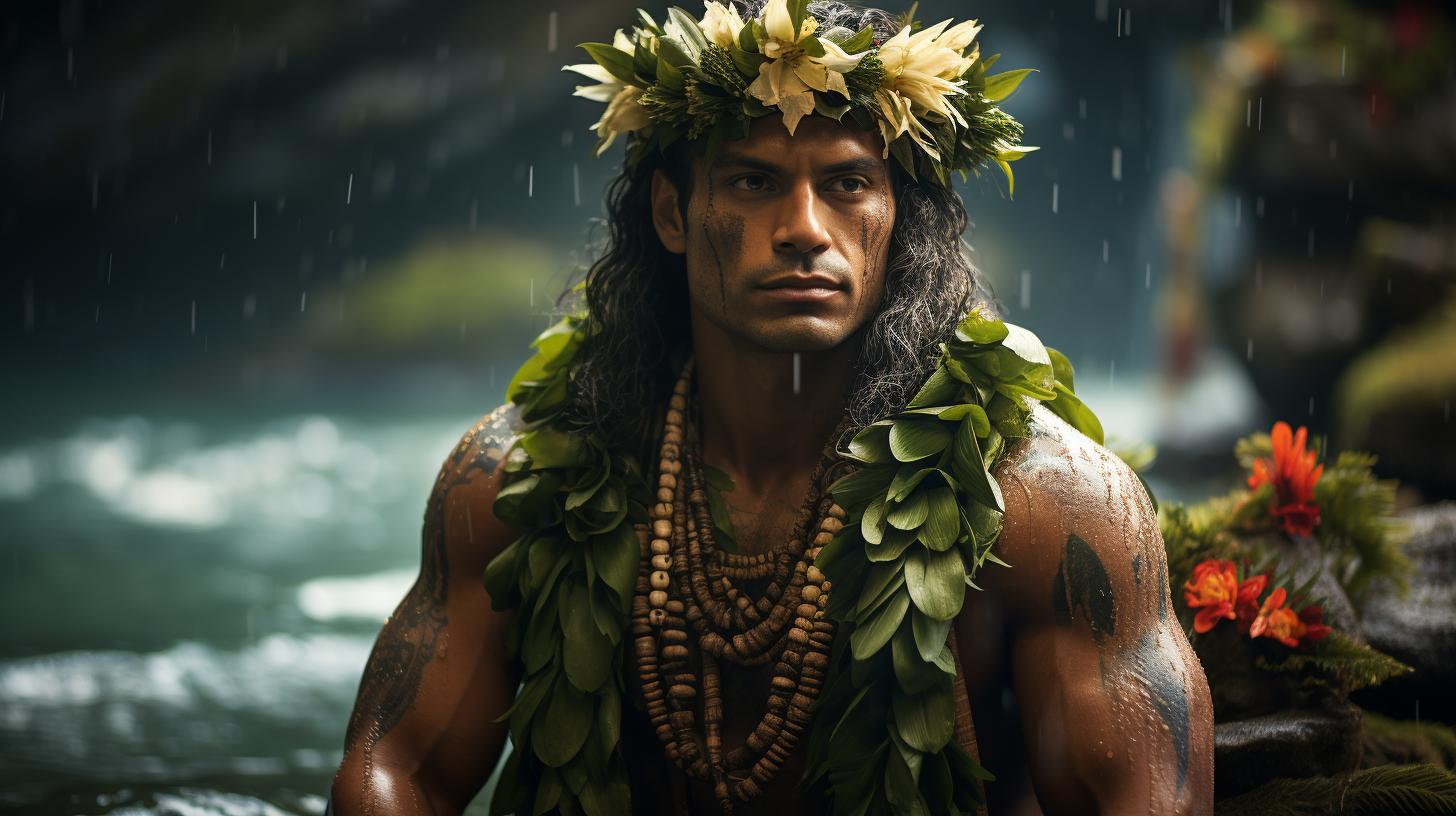
Ku Hawaiian god is a significant figure in Hawaiian mythology. This deity, along with other gods and goddesses, was worshipped by ancient Hawaiian tribes. K Hawaiian god, also known as [insert specific information about the god], played important roles in areas such as war, agriculture, fertility, and natural elements like fire and the ocean.
Today, Hawaiian mythology continues to be celebrated and preserved, showcasing the rich cultural heritage of the islands.
Kū – The Hawaiian God of War and Fishing
The deity known as Kū holds great significance in Hawaiian mythology, representing the domains of war and fishing. Kū is believed to possess unique origins and distinctive characteristics, making him an intriguing figure in Hawaiian culture.
This section explores the origins and characteristics attributed to Kū, sheds light on his role in Hawaiian society, and delves into the worship and rituals associated with this influential god.
Origins and Characteristics of Kū
Kū’s origins in Hawaiian mythology trace back to ancient times, intertwining with the creation and establishment of the islands.
He is often depicted as a powerful and masculine deity, exuding strength, courage, and war prowess. Kū is associated with nature and is believed to have control over various elements, including thunder, rain, and lightning.
His physical representation is commonly depicted with a strong and muscular physique, symbolizing his dominion over war and physical prowess.
Role of Kū in Hawaiian Society
In Hawaiian society, Kū played a vital role, particularly concerning warfare and fishing activities. He was revered as the god of war and was called upon by warriors for strength, protection, and victory in battle.
Kū also held prominence as the god of fishermen, as he was believed to bless the seas and provide abundant catches. Hawaiian fishermen would offer prayers and rituals dedicated to Kū, seeking his favor and guidance in their fishing endeavors.
Worship and Rituals Associated with Kū
The worship of Kū involved various rituals and ceremonies performed by dedicated priests and individuals seeking his blessings. These rituals often took place in sacred spaces known as heiau, elaborate temple complexes where offerings, chants, and dances were conducted to honor Kū.
Offerings such as food, flowers, and symbolic items associated with war and fishing were presented to express devotion and seek Kū’s favor. Additionally, special occasions and festivals were held to celebrate and pay homage to Kū, reinforcing the spiritual connection between the people and the deity.
- Offerings included food, flowers, and symbolic items associated with war and fishing.
- Rituals and ceremonies were performed in sacred spaces called heiau.
- Special occasions and festivals were dedicated to celebrating and paying homage to Kū.
Lono – The Hawaiian God of Agriculture and Fertility
According to Hawaiian mythology, Lono is revered as the god of agriculture and fertility, playing a vital role in the well-being of the Hawaiian people and the prosperity of the land.
This section delves into the mythological origins and attributes of Lono, highlighting the significance of this deity in Hawaiian culture.
Mythological Origins and Attributes of Lono
Lono is believed to have descended from the heavens and brought with him the blessings of abundant rainfall, fertility, and agricultural abundance. This deity is associated with the cycle of seasons, particularly the wet season, which provides nourishment for the land and ensures a fruitful harvest.
Lono is often depicted with a long beard and a headdress adorned with feathers, symbolizing his connections with the sky, wind, and rain. His physical appearance represents his authority as the bringer of life-sustaining elements to the Hawaiian Islands.
Influence of Lono in Hawaiian Culture
Lono’s influence extends beyond the realm of agriculture. He is revered as a peacekeeping deity, promoting harmony and unity among the people. Lono’s role in Hawaiian society emphasizes the importance of sustainable farming practices, respect for nature, and communal well-being.
Furthermore, Lono is associated with spiritual journeys and the pursuit of knowledge. In Hawaiian culture, the pursuit of wisdom and enlightenment is interconnected with the understanding and appreciation of nature’s cycles, as guided by Lono’s teachings.
Festivals and Traditions Honoring Lono
Hawaiians celebrate the presence of Lono through various festivals and traditions. One of the most significant is the Makahiki festival, dedicated to Lono and marking the beginning of the agricultural year.
During this time, feasts, hula performances, and sports activities are held to honor Lono and express gratitude for the bountiful harvest.
Another traditional observance associated with Lono is the offering of āina, which includes agricultural produce and prayers, as a gesture of respect and reciprocity to the deity.
These rituals showcase the deep-rooted connection between the Hawaiian people, their land, and the deity who sustains their agricultural endeavors.
- Lono’s role as the god of agriculture and fertility
- Mythological origins and attributes of Lono
- Influence of Lono in Hawaiian culture
- Festivals and traditions honoring Lono, including the Makahiki festival
Hina – The Goddess of the Moon and Fertility
Hina, the esteemed goddess of the moon and fertility, holds a significant role in Hawaiian mythology.
She is revered as the sister-wife of Ku and is considered the ancestral deity of the heavens and the earth. Let us delve into the legends and roles attributed to Hina in Hawaiian mythology.
Legends and Roles of Hina in Hawaiian Mythology
Hina’s tales are woven throughout Hawaiian mythology, portraying her as a powerful figure associated with the moon and its cycles. She is often depicted as a guardian and guide for those who travel at night.
Hina’s influence extends beyond the celestial realm, as she is also associated with fertility and abundance. As a goddess of fertility, Hina’s role encompasses nurturing and ensuring the vitality of both flora and fauna.
Symbolism of Hina in Hawaiian Culture
In Hawaiian culture, Hina symbolizes feminine power and the interconnectedness between the moon and the cycles of life. Her association with fertility represents the life-giving forces of the earth, offering sustenance and prosperity to the Hawaiian people.
Hina serves as a reminder of the balance and harmony required in nature and the importance of honoring the cycles of life.
Connections to Feminine Power and Guidance
Hina’s embodiment of feminine power extends beyond her role in fertility and the moon. She is also revered as a guiding force, providing wisdom and intuition to the Hawaiian people.
Hina’s influence is felt in the spiritual realm, offering support and guidance in navigating life’s challenges. Her presence is a reminder of the strength and resilience that can be found within the feminine energy.
In conclusion, Hina, the goddess of the moon and fertility, holds a vital role in Hawaiian mythology. Her legends and roles showcase the significance of feminine power, the symbolism of the moon, and the interconnectedness between nature and life’s cycles.
The reverence for Hina highlights the deep respect and harmony that the Hawaiian people have for the natural world.
Pele – The Goddess of Fire and Volcanoes
Stories and Representations of Pele
The mythology of Pele, the powerful Hawaiian goddess of fire and volcanoes, is steeped in captivating stories. According to legend, Pele is believed to reside in the sacred Kilauea volcano on the Island of Hawai’i, where her fiery temperament manifests in eruptions and lava flows.
She is often portrayed as a beautiful woman, with flowing hair and a passionate spirit.
One popular story recounts Pele’s journey from her homeland, Tahiti, to Hawai’i. As she travelled across the Pacific Ocean in her canoe, she created new lands and volcanic islands with her divine power.
Each time she touched the ground with her staff, a volcano would form, symbolizing her eternal presence in the Hawaiian archipelago.
Significance of Pele in Hawaiian Beliefs
Pele holds immense significance in Hawaiian beliefs and culture. As the goddess of fire, she is both feared and respected for her destructive power. Her volcanic eruptions and fiery displays are seen as expressions of her intense emotions and desires.
Hawaiians view Pele as a force of creation and transformation, continuously reshaping and renewing the land through her volcanic activity.
Hawaiians hold a deep reverence for Pele and offer prayers and offerings to appease her unpredictable nature.
They believe that by respecting her and living in harmony with the volcanic land, they can gain her favor and protection.
Relationship between Pele and the Island of Hawai’i
The relationship between Pele and the Island of Hawai’i is inseparable. The island itself is often referred to as “Pele’s home,” with its active volcanoes and rugged volcanic landscapes serving as a reminder of her presence.
Hawai’i locals and visitors alike honor and respect Pele by adhering to guidelines and respecting sacred sites associated with her.
Visiting the Kilauea volcano, the dwelling place of Pele, evokes a sense of wonder and awe.
Witnessing her ongoing volcanic activity, lava flows, and the creation of new land serves as a powerful reminder of the dynamism and raw power found in nature.
- The stories of Pele
- Divine power and symbolism
- Respecting Pele and her volcanic activity
- Pele’s relationship with the Island of Hawai’i
Other Hawaiian Gods and Goddesses
In addition to the prominent deities mentioned earlier, Hawaiian mythology features several other gods and goddesses revered by the ancient tribes.
These lesser-known figures play vital roles in the traditional beliefs and cultural practices of Hawaiians. Let’s explore three significant deities from this pantheon: Kanaloa, Kane, and Haumea.
Kanaloa – The God of the Ocean and Sea Life
Kanaloa is often depicted as the brother and counterpart of Kane, representing the forces of the ocean and its creatures.
He holds dominion over sea life, embodying the power and mysteries of the deep waters. Kanaloa is associated with the healing arts and is believed to have the ability to bring about transformation and change.
His presence is revered by fishermen and those who venture into the vast expanse of the Pacific.
Kane – The Creator and God of Light
Kane is one of the primary gods in Hawaiian mythology, revered as the creator of life and the bringer of light. He is associated with fertility, growth, and abundance. Kane is also believed to preside over natural phenomena such as rain, fresh water, and vegetation.
As the god of light, he symbolizes enlightenment and spiritual illumination. Kane’s influence extends to the domain of natural resources and is revered for his benevolence towards humankind.
Haumea – The Goddess of Fertility and Transformation
Haumea is a powerful goddess embodying the energy of fertility, transformation, and rebirth.
She is often associated with childbirth, agriculture, and the cycles of nature. Haumea’s divine presence is felt in the growth and nourishment of the land, and she is believed to bring abundance and prosperity.
As a deity of transformation, Haumea represents the ever-changing nature of life and the potential for personal growth and evolution.
These deities, along with others in the Hawaiian pantheon, provide insights into the complex belief system and spiritual practices of ancient Hawaiians.
Their stories and symbolism continue to have resonance in contemporary Hawaiian culture, acting as a reminder of the rich heritage of the islands.
Cultural Significance and Revival of Hawaiian Mythology
The rich mythology of Hawaii holds immense cultural significance, and efforts have been made to preserve and revitalize this ancient tradition. From the preservation of Hawaiian mythology and traditions to their impact on contemporary Hawaiian society and arts, the stories of Hawaiian gods and goddesses continue to play a vital role in the island’s cultural identity.
Preservation of Hawaiian Mythology and Traditions
Hawaiian mythology and traditions have been diligently preserved by cultural practitioners, scholars, and communities passionate about safeguarding their heritage. Through oral traditions, storytelling, and academic research, the knowledge of Hawaiian gods and goddesses has been passed down through generations, ensuring their legacy endures.
Dedicated organizations, museums, and educational programs strive to educate both locals and visitors about the importance of Hawaiian mythology.
Impact on Contemporary Hawaiian Society and Arts
The influence of Hawaiian mythology extends beyond ancient stories and reaches into various aspects of contemporary Hawaiian society and arts. Artists, musicians, and performers incorporate themes and imagery from Hawaiian mythology into their works, connecting the past with the present.
Hawaiian cultural practices, such as hula and traditional chants, are performed and celebrated, keeping the spirit of the gods alive in modern times. Hawaiian language revitalization efforts also contribute to the preservation and integration of mythology into everyday life.
Touristic Experiences and Appreciation of Hawaiian Gods
Hawaiian mythology provides a unique and immersive experience for tourists interested in the islands’ cultural heritage. Visitors have the opportunity to learn about and appreciate the stories and significance of Hawaiian gods through guided tours, cultural events, and interactive experiences.
The art of creating and displaying traditional tikis, wooden carvings representing Hawaiian gods, serves as popular souvenirs and further promotes the appreciation and understanding of Hawaiian mythology among tourists.
.












